
Who are the Amish?
Amish, also called Amish Mennonite, is a member of a Christian group in North America, primarily the Old Order Amish Mennonite Church. The church originated in the late 17th century among the followers of Jakob Ammann.
History and architecture of the Church
Jakob Ammann (c. 1644–c. 1730) was a Mennonite leader whose controversial teachings caused a schism among his fellow believers in Switzerland, Alsace, and southern Germany. Ammann insisted that any excommunicated member of the Mennonite church be socially shunned and that anyone who lied be excommunicated. Following the example of Jesus , he introduced footwashing into worship and taught that church members should dress uniformly , that beards should not be trimmed, and that it was improper to attend services in a state church. Although Ammann sought reconciliation with the Mennonites, he continued to insist that all those who had been excommunicated be excluded, and his attempts at reconciliation thus failed. Amish communities emerged in Switzerland, Alsace, Germany, Russia, and Holland, but emigration to North America in the 19th and 20th centuries and assimilation with Mennonite groups gradually eliminated the Amish in Europe.
![The plowman] - Drawing. Public domain image. - PICRYL - Public Domain Media Search Engine Public Domain Search](https://cdn4.picryl.com/photo/1886/01/01/the-ploughman-640.jpg)
The Amish began migrating to North America in the early 18th century, first settling in eastern Pennsylvania, where a significant population remains. Schism and upheaval occurred after 1850 due to tensions between the "New Order" Amish , who accepted social change and technological innovation, and the "Old Order," or traditional, Amish, who generally did not. Over the next 50 years, about two-thirds of the Amish formed small separate churches or joined the Mennonite Church or the General Conference Mennonite Church.

Credit: Landis Valley Museum
Most traditional Amish are members of the Old Order Amish Mennonite Church. At the beginning of the 21st century, approximately 250,000 Amish lived in more than 200 Old Order Amish settlements across the United States and Canada; the largest were in Pennsylvania, Ohio, Indiana, Iowa, Illinois, and Kansas, with others in Wisconsin, Maine, Missouri, and Minnesota. Their settlements are divided into church districts, self-governing congregations of about 75 baptized members. If the district becomes much larger, it is divided again, as members meet in each other's homes. There are no church buildings. Each district has a bishop, two to four preachers, and an elder, but there are no general conferences, mission groups, or cooperative agencies.

Photograph by Vladimir Kudinov on Unsplash
Beliefs and lifestyles
Humility, family, community, and separation from the world are the pillars of the Amish . Daily life and customs are governed by an unwritten code of conduct called the Ordnung , and rejection (Meidung) remains a primary way for the community to deal with disobedient members. In official religious doctrine, the Amish differ little from the Mennonites. Holy Communion is celebrated twice a year, and footwashing is practiced by both groups. Individuals are baptized when admitted as official members of the church, around the ages of 17 to 20. Church services are conducted in High German , and Pennsylvania Dutch (see Pennsylvania German )—a mixture of High German, various German dialects, and English—is spoken locally and is common in everyday speech. Services are held on a rotating basis in family homes and barns. A large wagon, filled with benches for serving and dishes and food for the meal that follows, will often be pulled to the host's property. In most Amish homes, a special place is reserved next to the Bible for the Martyrs' Mirror , a book that chronicles Amish history and honors the many Amish, Mennonite, and Anabaptist ancestors who died for their faith. The Budget , established in 1890, is the national newspaper serving the many Amish and Mennonite communities; it is published in Sugarcreek, Ohio.
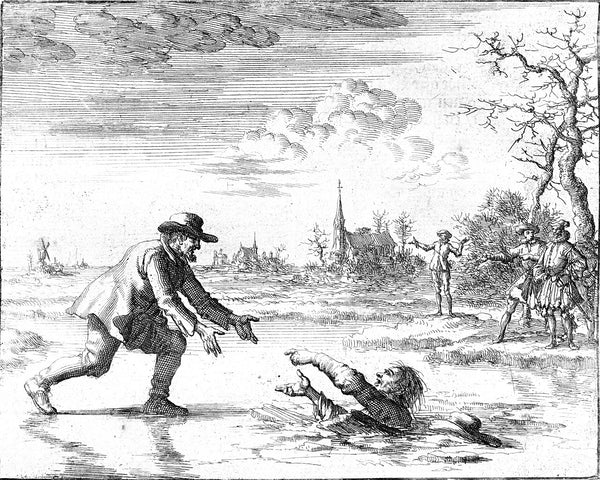
The Mirror of Martyrs
The Amish are best known for their plain, mostly homemade clothing and their nonconformist lifestyle. Men and boys wear broad-brimmed black hats, dark-colored suits, straight-cut coats without lapels, wide-brimmed pants, suspenders, solid-colored shirts, and black socks and shoes. Their shirts may fasten with conventional buttons, but their coats and vests fasten with hooks and eyes. Men grow beards after marriage, but are forbidden to grow mustaches. Old Order Amish women and girls wear bonnets, long full dresses with capes over their shoulders, shawls, black shoes, and stockings; their capes and aprons are fastened with straight pins or snaps. Amish women never cut their hair, which is worn in a bun, and they are not allowed to wear jewelry of any kind. Amish dress, which is essentially that of 17th-century European peasants, reflects their reluctance to change, their respect for tradition, and their interpretation of biblical restrictions that prevent them from conforming to worldly customs (e.g., Romans 12:2 ).

The Old Order Amish avoid personal telephones at home but sometimes use a community telephone. They also avoid automobiles. They travel by bicycle and horse-drawn carriage, but many of them sometimes take other people's cars, trains, or buses in an emergency. Although buggies are traditional box-shaped vehicles, they are not always black, as is commonly thought; some are white, gray, or even yellow, and many Amish and Mennonite groups are distinguished by the color chosen for their buggies. Buggies may also be equipped with modern conveniences such as heaters, windshield wipers, and padded seats. The use of electricity is strongly avoided, however, as it is a primary connection to the world that could lead to worldly temptations and conveniences detrimental to community and family life. Exceptions to this prohibition have sometimes been made by Amish who must use electric flashers on their buggies in order to legally drive in their communities and certain farm equipment that could not function without a minimum amount of electricity and without which the economic subsistence of the community would be threatened; for example, some milking equipment may be impossible to operate without some electricity, and electric fences may be considered essential for raising livestock. Bottled gas is often used to operate appliances, even barbecue grills, and gas lanterns and lamps may be used for indoor lighting. The New Order Amish permit the use of electricity, car ownership, and telephones in the home.

The Amish use electric blinkers for their strollers.
The Amish are considered excellent farmers, growing and storing the majority of their food and purchasing only basic goods like flour and sugar in stores. The Old Order Amish refuse to use most modern farm machinery, preferring the sweat of their brows to the ease of modern conveniences. The modern machinery they do use is often not powered by electricity, but by an alternative energy source. The Amish are famous for their barn operations. These cooperative efforts often involve hundreds of men, along with dozens of women who feed the workers. These custom-built barns are a constant reminder of Amish tradition, community, industry, and craftsmanship. The hexagon signs that often adorn the barns—round geometric emblems painted to ward off evil—are synonymous with the farming communities of the " Pennsylvania Dutch ."

The Amish generally accept photographs of their way of life, but they forbid themselves from photographing themselves , believing that such things are graven images in violation of the Second Commandment . For this same reason, the dolls that young Amish girls play with are traditionally faceless. Musical instruments are also forbidden by the Old Order Amish, as playing them, they believe, would be a "worldly" act contrary to critical Gelassenheit: the spirit of humility, modesty, and informality that is central to the Amish way of life and which the Amish believe was exemplified by Jesus Christ; other Amish may play an instrument in private, such as the accordion or harmonica, but never in public. Singing, however, is important in Amish life, whether at work or play, at home or at church. Excerpts from the Ausband (their hymn) are commonly sung. Group songs are always in unison and are never harmonized. Hymn singing is popular on Sunday evenings, especially among young Amish, and on this occasion, a separate hymn book (with "faster tunes"), called a "thin book," is used.
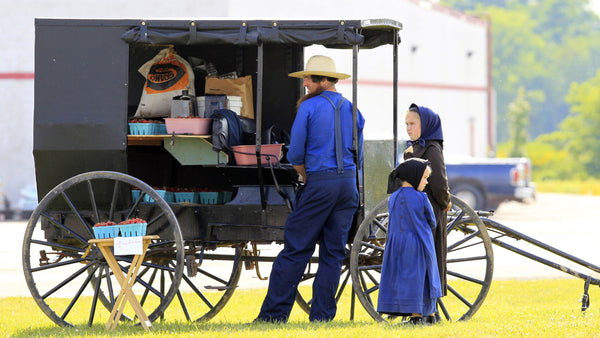
Amish quilts, meticulously sewn by groups of Amish girls and women, are popular with tourists and highly valued by collectors . Quilts are a form of socialization and relaxation for Amish women, and the group effort reflects the Amish virtues of community and cooperation. The quilts may be intricately designed with colorful patterns but cannot contain representative images, which are considered whimsical and proud. The sale of quilts, handcrafted items such as spell signs, and their famous baked goods like friendship bread and shoofly pie is a common source of income for Amish families. The Amish recipes of Elizabeth Coblenz (who died in 2002) have been published in hundreds of newspapers, and her cookbooks are famous worldwide.
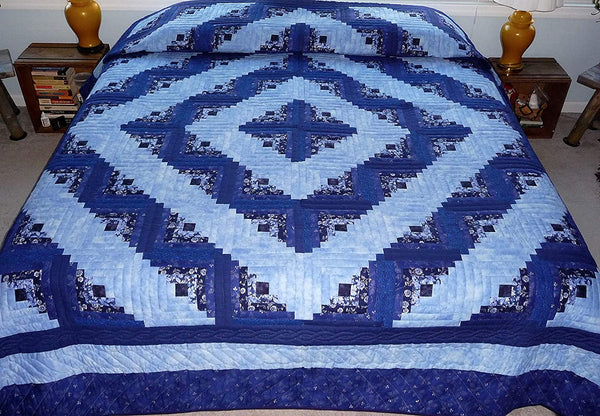
Amish children typically attend one-room, community-run schools and attend school only through eighth grade; this eighth-grade limit in the United States was deemed acceptable by a 1972 Supreme Court ruling. Instruction is conducted in English and focuses on the basics of reading, writing, and mathematics. Amish history and practical farming and homemaking skills are also taught. As with many breakaway branches of Protestantism, convincing children of believers to remain in the religious community can often be a challenge. If a young man joins a Mennonite church or another less demanding religion, the Amish will often say, "He got his hair cut." If a young person abandons the faith altogether, that person is said to have "gone English."

The Amish are not involved in state or national politics, and as pacifists, they do not serve in the military. They also disavow Social Security and most forms of insurance, often pooling their resources to help Amish families in need, but they do visit doctors, dentists, and opticians. As has often been said, the Amish are in the world but not really of it, as they try, in their simple, placid way, to maintain as much separation as possible from the rest of society.
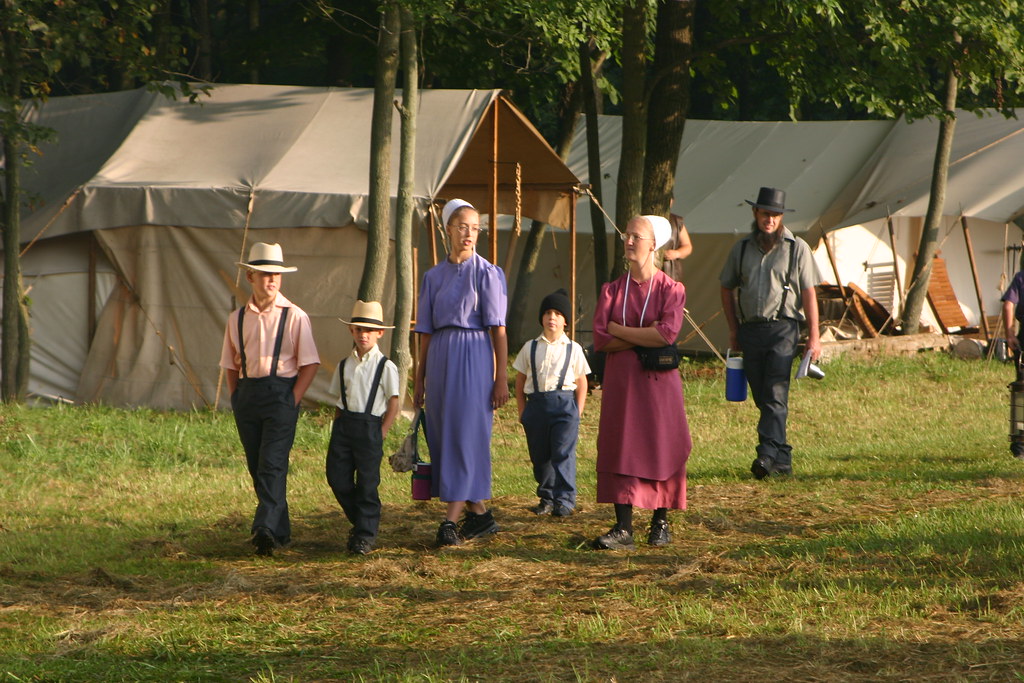
FAQ about the Amish
Why don't the Amish use electricity?
"The Amish interpret connection to electric wires as a connection to the world—and the Bible tells them that they must not be 'conformed to this world.'" ( Romans 12:2 ) In 1919, Amish leaders agreed that connecting to electric lines would not be in the best interest of the Amish community. They did not make this decision because they believed electricity was inherently evil, but because easy access to electricity could lead to many temptations and the deterioration of church and family life.
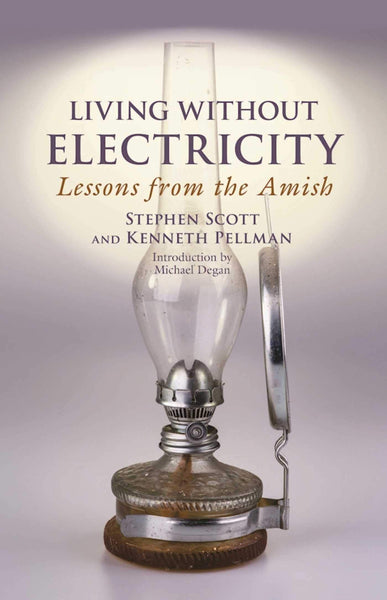
A book describing how to do without electricity using the Amish as an example.
Why do the Amish wear beards and why don't the Amish have mustaches?
"There are many scriptures that mention beards in the Bible. An example would be Psalm 133:1,2 . An Amishman does not shave his beard after marriage; a long beard is the mark of a mature Amishman. Mustaches, on the other hand, have long been associated with the military and are therefore forbidden among the Amish."

Why do Amish people wear black hats?
"Here in Lancaster County, Amish men wear broad-brimmed hats made of black felt. The width of the brim and band, as well as the height and shape of the crown, are variables that measure the orthodoxy of the group and the individual wearer. A wide brim, a low crown, and a narrow hat band denote the oldest and most traditional style. Within religious groups, a person's age and status are often reflected by the dimensions of their hat. In warm weather, simple men prefer straw hats."
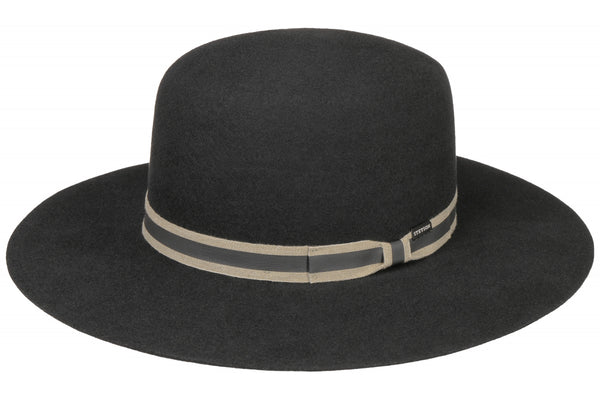








Leave a comment